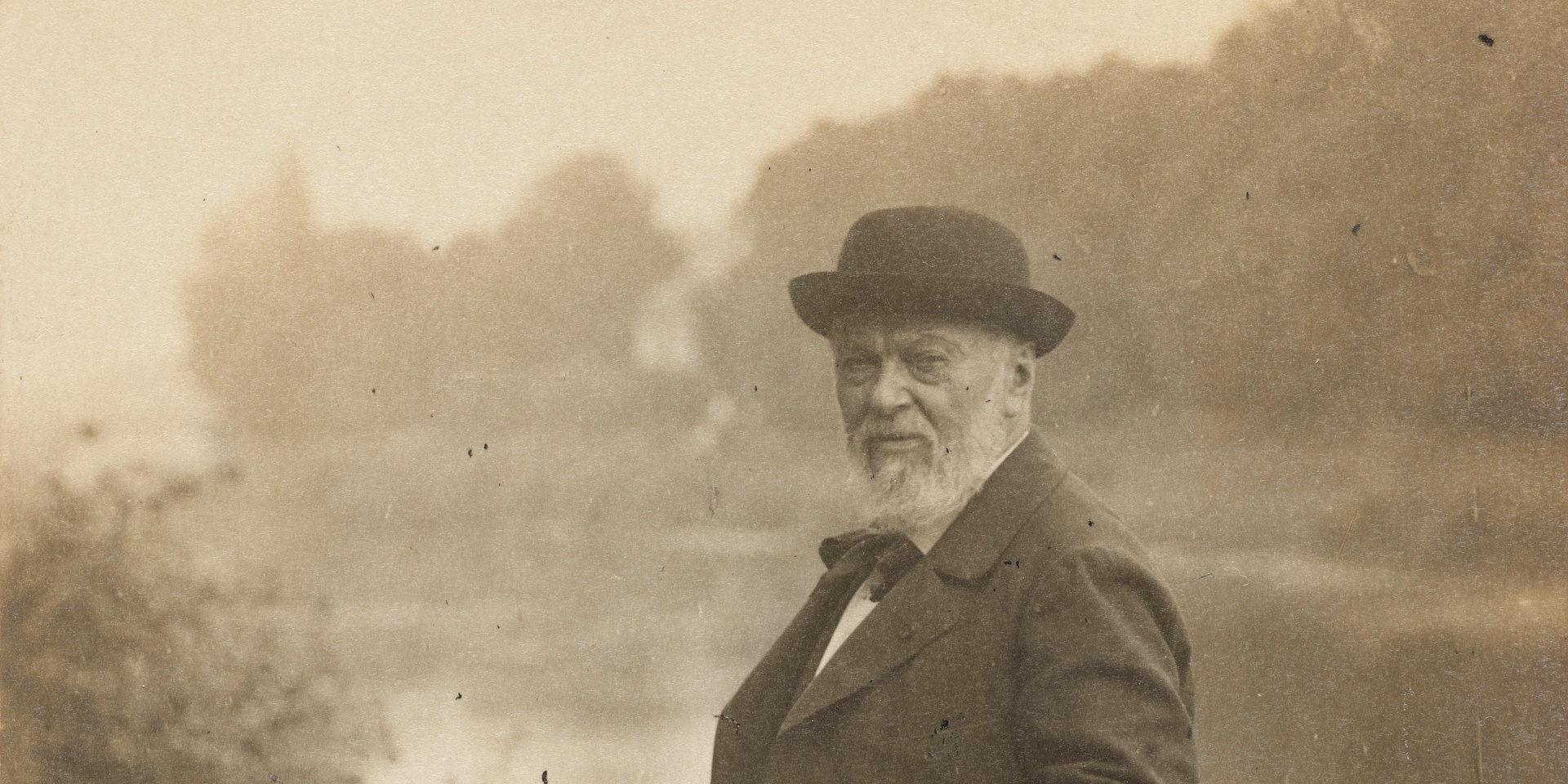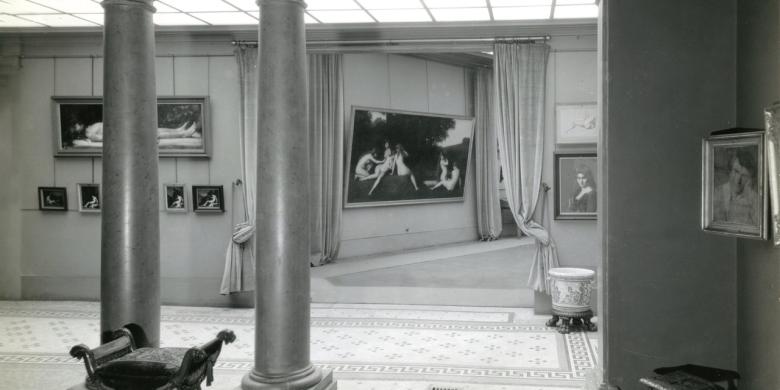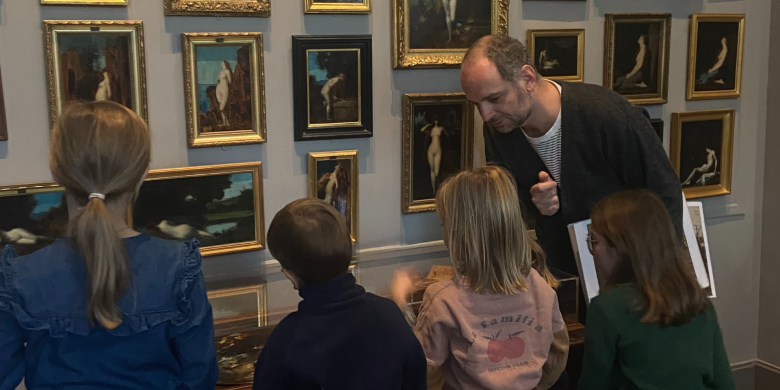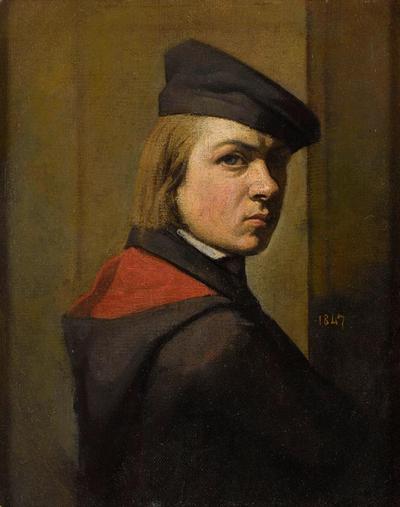
© RMN - Grand Palais / Franck Raux
Alsace and the Early Years
Jean-Jacques Henner was born on 5 March 1829 in Bernwiller in the south of Alsace. His parents were farmers. When Alsace was annexed by Germany in 1871, he chose French nationality but retained strong ties with the region of his birth, returning to it once a year. Alsace is present in his work as shown in his emblematic work L’Alsace. Elle attend (Alsace. She waits) and the many landscapes of his native region, including his idealistic nymphs in landscape.
His early paintings are mainly portraits or genre scenes such as The artist’s mother praying before the body of her daughter Madeleine. Henner’s gift was first noticed at school by Charles Goutzwiller his drawing teacher in Altkirch. He then became a pupil of Gabriel Guérin in Strasbourg. Thanks to a grant from the Council of the Haut-Rhin department, he was able to continue his studies in the studios of Drolling and Picot at the Ecole des Beaux-Arts in Paris. There Henner received a traditional training. He also visited museums regularly. He was particularly influenced by Italian Renaissance painters such as Titian, Raphael and Correggio. He also admired Holbein, whose Basel Museum Dead Christ he particularly admired, and French painters from the first half of the nineteenth century such as Ingres, Prud’hon and Corot.
The Prix de Rome and His Years at the Villa Medici
After two unsuccessful attempts, Henner finally won the Grand Prix de Rome in 1858 with Adam and Eve discovering the body of Abel. This led to a five-year stay at the Villa Medici in Rome, where he met other artists such as the sculptor Falguière or the composer Bizet, which paved the way to his official career. He discovered a country that enchanted him with its beautiful landscapes and picturesque everyday life. Inspired by this new setting he painted his only large Italian landscape, Rome from the terrace of the Villa Medici in 1860. Although he was seen as a history painter when he arrived in Rome, he also executed numerous genre scenes and small luminous landscapes. In Italy, Henner also visited Florence, Venice and Naples where he admired works from the Roman Antiquity and the Italian Renaissance.
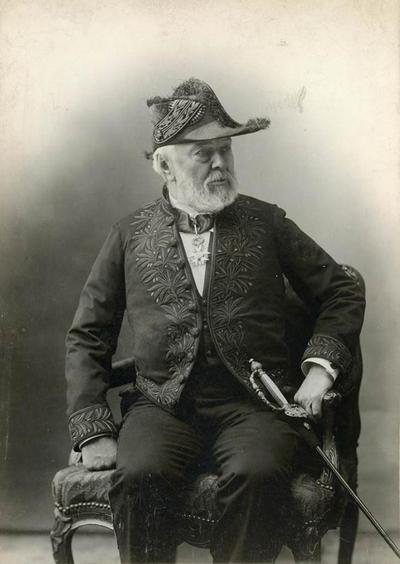
A Successful Career
On his return from Rome, Henner concentrated first on naturalism, as can be seen in his Reclining Nude known as Lady on a Black Sofa (1869 Salon) which is now in the Museum of Fine Arts in Mulhouse. Influenced by Manet and Degas, he exhibited La Toilette in 1868, which he later destroyed because of bad reviews.
Henner gradually abandoned this naturalistic style and began painting subjects inspired by an undated idealistic period in Antiquity rather than the contemporary world. Thus the titles of his paintings evoking pastoral poetry of classical literature, Idyll and Eclogues exhibited in 1872 and 1879, or mythology as Byblis and Naiad.
From the 1870s onwards, he became a successful artist and a popular portrait painter. In 1889, Henner was elected a member of the Institut de France and in 1903 he was awarded the highest rank in the Order of the Legion of Honour. He regularly submitted paintings with historical or religious subjects to the Salons and Universal Exhibitions such as Saint Sebastian, exhibited in 1888. He did not receive many commissions, with the exception of Truth for the Sorbonne, but most of his works were purchased by the French state for the musée du Luxembourg, a museum dedicated to living artists, and for major regional museums. He was also sought after by private collectors, including Alfred Chauchard, who owned his 1883 Reader as well as Millet’s Angelus. Both paintings are in the Musée d’Orsay.
An Academic Painter?
Henner enjoyed a successful career even if his paintings did not really match the ideal of the Academy at that time. They were criticised comparing with traditional historical paintings. Unlike his contemporary Jean-Paul Laurens or the Neo-Greek Jean-Léon Gérôme, Henner had no desire to reconstruct history. He attached little importance to narrative elements, such as decoration or costume. Furthermore, his paintings lacked the precise form or appealing aspect in the works of William Bouguereau or Alexandre Cabanel.
It is not really possible to classify Henner in any artistic movement of the second half of the nineteenth century. However his way of blending idealism, realism and references to the Italian Renaissance, are nevertheless close to that of his Neo-Florentine sculptor friends Paul Dubois and Alexandre Falguière.
At the time of his death in 1905, Henner was a famous artist whose works were widely known through engravings and photographs: L’Alsace. Elle Attend or Fabiola, were almost icons. This success also resulted in him being widely copied.

